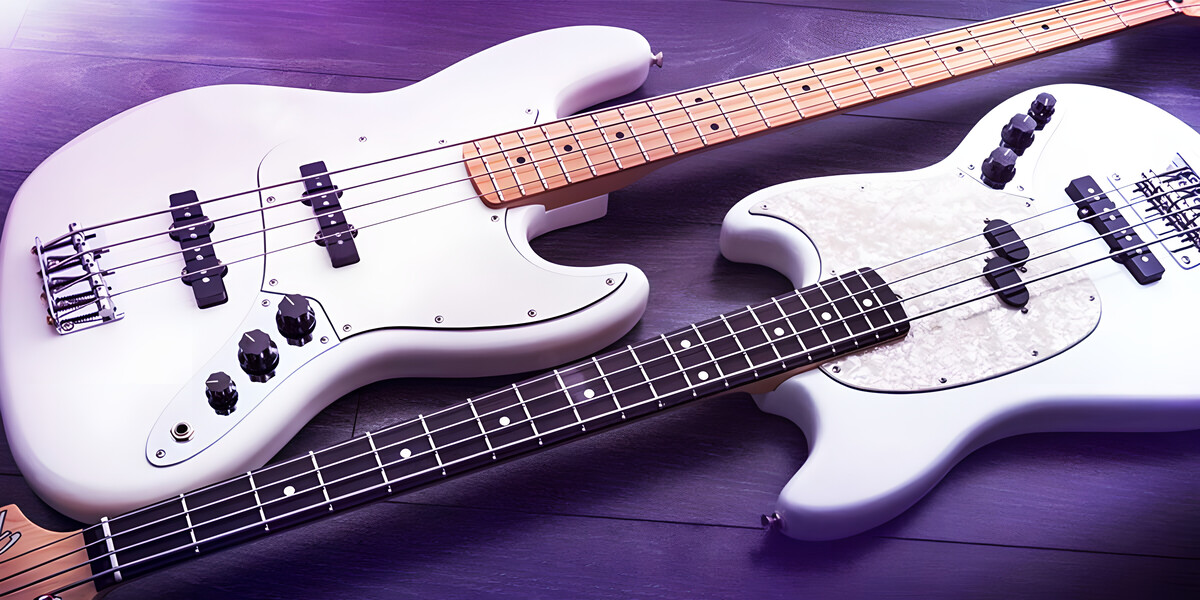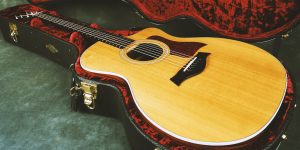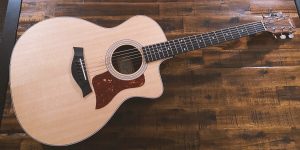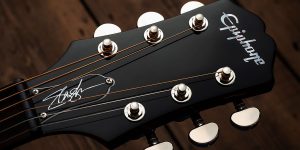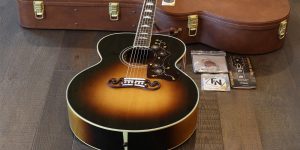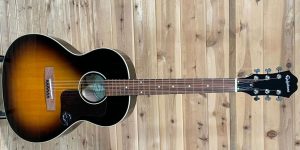For many years, there has been a heated argument among professionals regarding short-scale and long-scale instruments. Short-scale basses have made a name for themselves in the music world with their small size and distinctive traits. Thanks to their compact size, they differ from their longer-necked peers in terms of playing enjoyment and tonal pallet. In this exploration of what a short-scale bass is, I’m going to discuss its design features, advantages, and musical styles that have embraced its captivating charm.
What are short-scale bass guitars?
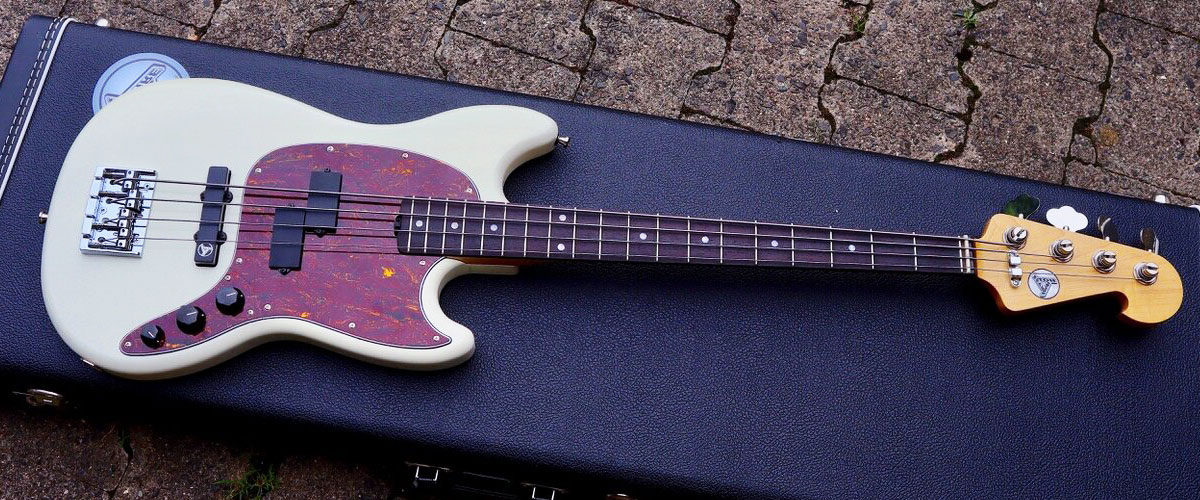
Comparing short-scale bass guitar vs normal, the first is characterized by its shorter neck length. It typically has a scale length ranging from around 30 inches to 32 inches. A shorter scale length results in closer spacing among the frets and less string tension, which can affect the instrument’s performance and tone qualities in quite a lot of ways. It gives a distinctive harmonic tone that may work especially well with some musical styles and performing techniques. Their warm and somewhat dull tone can shine in various scenarios.
Here are some musical genres and playing styles that benefit the most from short-scale basses:
- Short-scale basses are often favored in blues music, where a warm, round, and fat tone is essential.
- Jazz bassists appreciate the smooth, thumpy sound of short-scale basses. Alongside the other instruments in a jazz band, they may provide a rich, powerful tone.
- In R&B and soul music, short-scale basses can provide a vintage, old-school sound that complements the genre’s groove and soulful melodies.
- Funk bass lines often require a tight, punchy sound with a strong emphasis on rhythmic playing.
Short-scale basses can excel in studio recording situations, where their warm and balanced tone can be shaped to fit a wide range of musical styles. They are also great options for beginners, especially those with smaller hands. When playing bass in an acoustic or unplugged setting, the mellower and less boomy tone of a short-scale bass can be more pleasant.
The short scale bass: pros and cons
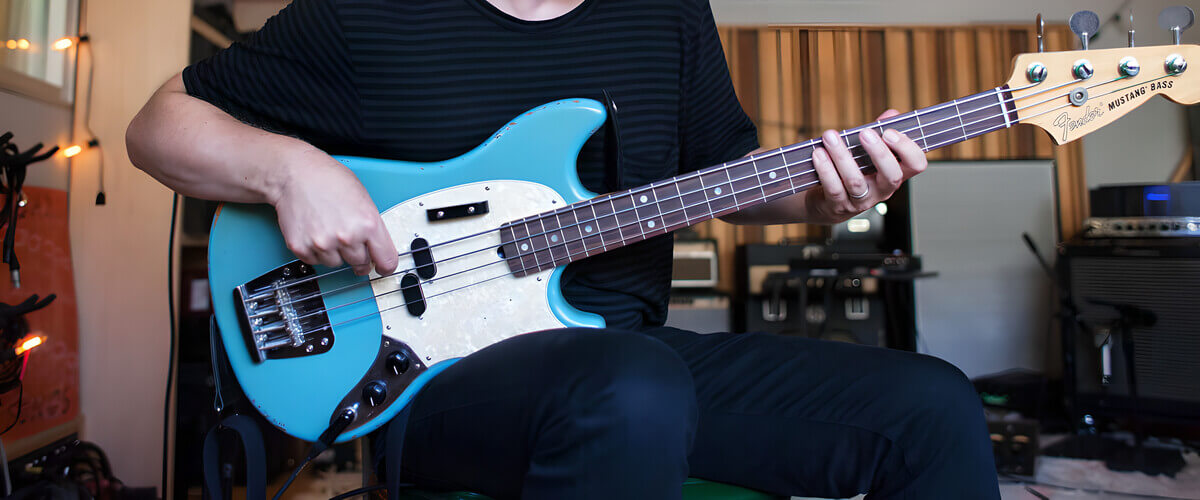
As you’ve already realized, short-scale basses have their own set of advantages and disadvantages, and the choice of long-scale vs. short-scale bass guitars depends on the player’s preferences and musical requirements. Let’s explore their advantages and disadvantages more carefully.
Pros
- The reduced neck length and string tension make fretting notes and performing techniques like bending and sliding more accessible.
- Their smaller size and lighter weight can make them more comfortable to play for extended periods, reducing fatigue.
- Produce a unique tone characterized by warmth and roundness. It can be advantageous in certain musical genres, such as blues, jazz, and vintage rock.
- They are more portable and easy to transport. Small bass guitars can be a significant advantage for those who frequently travel with their instrument.
- They have a vintage design from the 1950s and 1960s that appeals to many musicians and collectors.
- Perfect for beginners, as it may be easier to master due to its smaller bass guitar size and reduced string tension.
Cons
- The shorter vibrating length of the strings can result in less sustain and a somewhat duller tone.
- The shorter scale length can make it challenging to achieve the same level of articulation and clarity in fast or complex bass lines.
- More experienced musicians prefer the higher string tension found in standard or long-scale basses, as it can provide more control and precision in their playing.
- They are less common than standard-scale basses, so there may be fewer options available in terms of models and price ranges.
Construction and components

Common body materials include alder, ash, mahogany, and basswood. The body’s shape affects the instrument’s aesthetics and can impact its resonance and weight.
The neck of a short-scale bass is notably shorter than that of a standard-scale bass and is typically made of wood, such as maple or mahogany. It is often topped with a fretboard made of materials like rosewood, maple, or ebony.
Short-scale basses have frets embedded in the fretboard, allowing players to change the pitch of notes by pressing the strings against them. The number of frets can vary, but most basses have between 20 and 24 frets.
The headstock houses the tuning pegs that allow you to adjust the tension of the strings and tune the bass. Short-scale basses typically have a smaller headstock compared to long-scale basses. Tuning machines are located on the headstock and are used to tighten or loosen the strings, adjusting their pitch. They come in various styles, such as open-gear or enclosed, and affect keeping the bass in tune.
There are one or more pickups, commonly in configurations like single-coil or humbucker. They usually have control knobs or switches to adjust the volume, tone, and pickup selection. These controls vary depending on the bass’s design but allow players to shape their sound according to their preferences.
Their strings are specifically designed for their shorter length. They have a shorter vibrating length and lower tension compared to those used on standard basses. Common string materials include nickel-plated steel, stainless steel, and flatwound or roundwound variations.
Popular misconceptions
There are quite a lot of misconceptions and various fictions about short-scale basses. Most often, these are opinions of young and inexperienced musicians. Let’s take a look at the most popular ones and dispel them.
Short-scale basses have less sustain
While it’s true that shorter-scale basses have slightly less sustain compared to their longer-scale counterparts, the difference may not be significant in practice.
Sustain can also be influenced by the type of strings used, the quality of the instrument’s hardware, and the setup of the bass, including the action and intonation. Well-known manufacturers can design short-scale basses that offer excellent sustain by carefully selecting materials and optimizing the instrument’s setup.
Short-scale basses are only for players with small hands
While short-scale basses are indeed more accessible for players with smaller hands, they are not exclusively designed for such players. Short-neck bass guitar can be a comfortable choice for players of all hand sizes, particularly those who prefer a more compact instrument or find the longer neck of a standard scale bass to be cumbersome.
Short-scale basses are always lighter in weight
While it’s true that some may be lighter than certain long-scale models, this is not a universal rule. For example, a short-scale bass with a solid mahogany body and high-quality hardware may be just as heavy, if not heavier, than a long-scale bass with a different construction.

